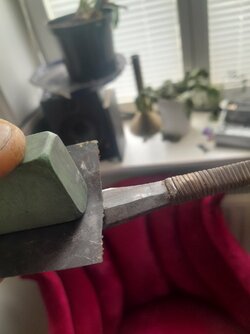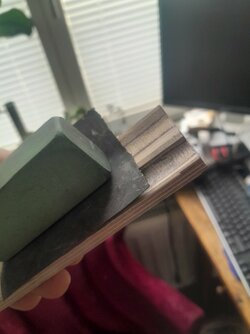i.e. the mild steel or iron side, not the ura.
Has anybody got any tips about how best to do this? Assuming I don't have one of those traditional Japanese scrape-y things (are they called 'sen'?). Slip stones? Sandpaper round a bit of dowel? Power tools?
Also - at point would people think it necessary? I have this very nice old razor, shaves wonderfully, but had quite a lot of wear when I got it. It's alright on stuff like cotis and softer finishers, but I would say annoyingly sticky on harder jnats and stuff. So should I be thinking of tyring to sort that?
(@Gamma Keith - I think I've read you've done this a few times, got any tips or thoughts...?)


Has anybody got any tips about how best to do this? Assuming I don't have one of those traditional Japanese scrape-y things (are they called 'sen'?). Slip stones? Sandpaper round a bit of dowel? Power tools?
Also - at point would people think it necessary? I have this very nice old razor, shaves wonderfully, but had quite a lot of wear when I got it. It's alright on stuff like cotis and softer finishers, but I would say annoyingly sticky on harder jnats and stuff. So should I be thinking of tyring to sort that?
(@Gamma Keith - I think I've read you've done this a few times, got any tips or thoughts...?)


